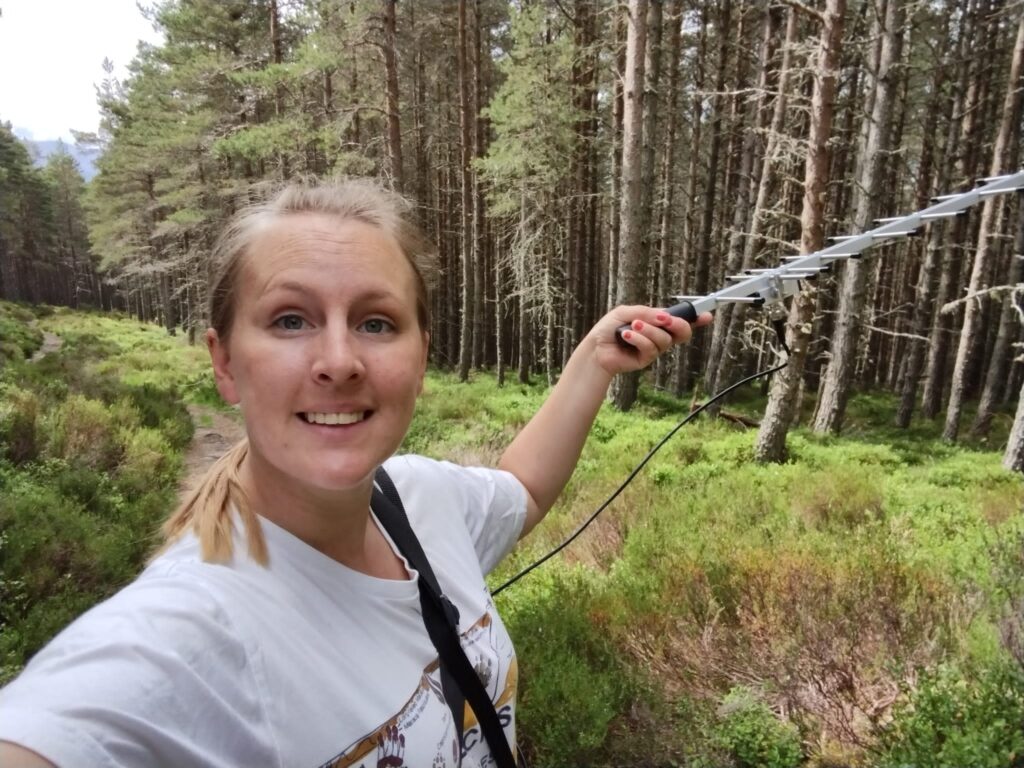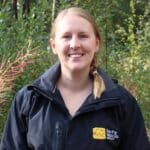Like many in the conservation field, I struggled to find a paid job after my graduation in 2017. After months of getting nowhere, I begrudgingly accepted that I’d have to do yet more volunteering to continue building experience. I managed to gain a voluntary three-month winter fieldwork position in the Scottish Highlands with Scottish Wildcat Action.
It was a dream to have worked there. An icon of the Scottish wilderness, the Highland-dwelling European wildcat now faces threat of extinction in Britain. After centuries of hunting, habitat loss, and more recently, interbreeding (also known as hybridisation) with domestic cats, their numbers have dramatically declined. SWA was the first national conservation plan with a vision to restore sustainable wildcat populations by working with local people to manage the threats faced by the amazing Highland tigers.
You can listen to the 5-minute Good Natured podcast episode I recorded about this volunteering experience back in 2021 here, or in the player below.
Fast-forward to 2022: I returned to working with wildcats, this time in a paid capacity! As the lead of the TNVR programme, I started working for Saving Wildcats, a EU LIFE funded partnership project led by the Royal Zoological Society of Scotland (RZSS), based at Highland Wildlife Park near Aviemore.

One of the wildcats released into Cairngorms Connect captured on a camera trap in October 2023. (Image credit: Saving Wildcats)
Helping House Cats, Protecting Wildcats
The team at Saving Wildcats have neutered 19 feral domestic cats and kittens since the project began in 2020. We have also socialised 10 feral kittens in the last year with the help of Strathspey Cats Protection volunteers, allowing them to be adopted by local families.
Flossie (see photo) was identified to our field team by a member of the public. She was living under a caravan, and we managed to tempt her into a trap with some cat food. As she was less than eight weeks old, we were able to socialise her and she is now a loving family pet.

– After being found living under a caravan, Flossie was socialised and rehomed, and is now part of a loving family (Image credit: Saving Wildcats).
On the Trail of the Highland Tiger
Outside of the TNVR programme, there is another significant part of my job at Saving Wildcats. The project is also safeguarding the Scottish wildcat population by breeding and releasing them into the wild; the very first captive-bred wildcats were released into an area called Cairngorms Connect last summer. Seven months on, we have only recorded one mortality, which is a phenomenal success for a carnivore release project!
I’m responsible for downloading the released wildcats’s movement data from their GPS-radio collars every day. Before release, we fitted each cat with a GPS receiver collar, which provide detailed location on the animal’s position, as well as when it was there.
The receivers record and store location data from the wildcats’ movements until a member of our team downloads the data, which can only be done from a short distance. This means we have to locate the cat, and we do this by following a radio signal transmitted from the collars. There is nothing more satisfying than anticipating their behaviour and movements, trekking up a mountain and hearing the sweet sound of the collar pinging and the data downloading to our base station!

Lara out tracking released wildcats in the Cairngorms National Park (Image Credit: Saving Wildcats)
The wildcats do keep us on our toes, with some of them moving up to three to four kilometres in a night! This means we have had to develop good working relationships with many landowners and the gamekeepers and estate workers that work on that land, to keep everyone informed of our activities, and for them to be our eyes and ears. We often get helpful sightings sent to us from our neighbours.
Last month, I went out with our local Wildlife Crime Officer to check a camera where we thought one of the wildcats was feasting on a brown hare. It was an amazing experience to check the camera and see videos of one of the female wildcats coming back for several days to enjoy her kill. You can see one of the videos here.
What comes next?
As we progress through the winter season, we are monitoring the wildcats closely on how they react to the colder conditions. There’s also lots to look forward to later in the year, as our team at Highland Wildlife Park are preparing kittens, born at the off-show conservation breeding for release centre last year, for a challenging life in the wild. With luck, we may even see wild-born wildcats from last year’s releases too!
As a final note, I want to reassure those seeking a career in the conservation sector that getting a job in conservation is possible. I know that it might seem like a never-ending stream of interviews and rejections – I know, I have been there – but I can tell you it is achievable.
You can stay up to date with our project by joining our mailing list or following us on social media.


